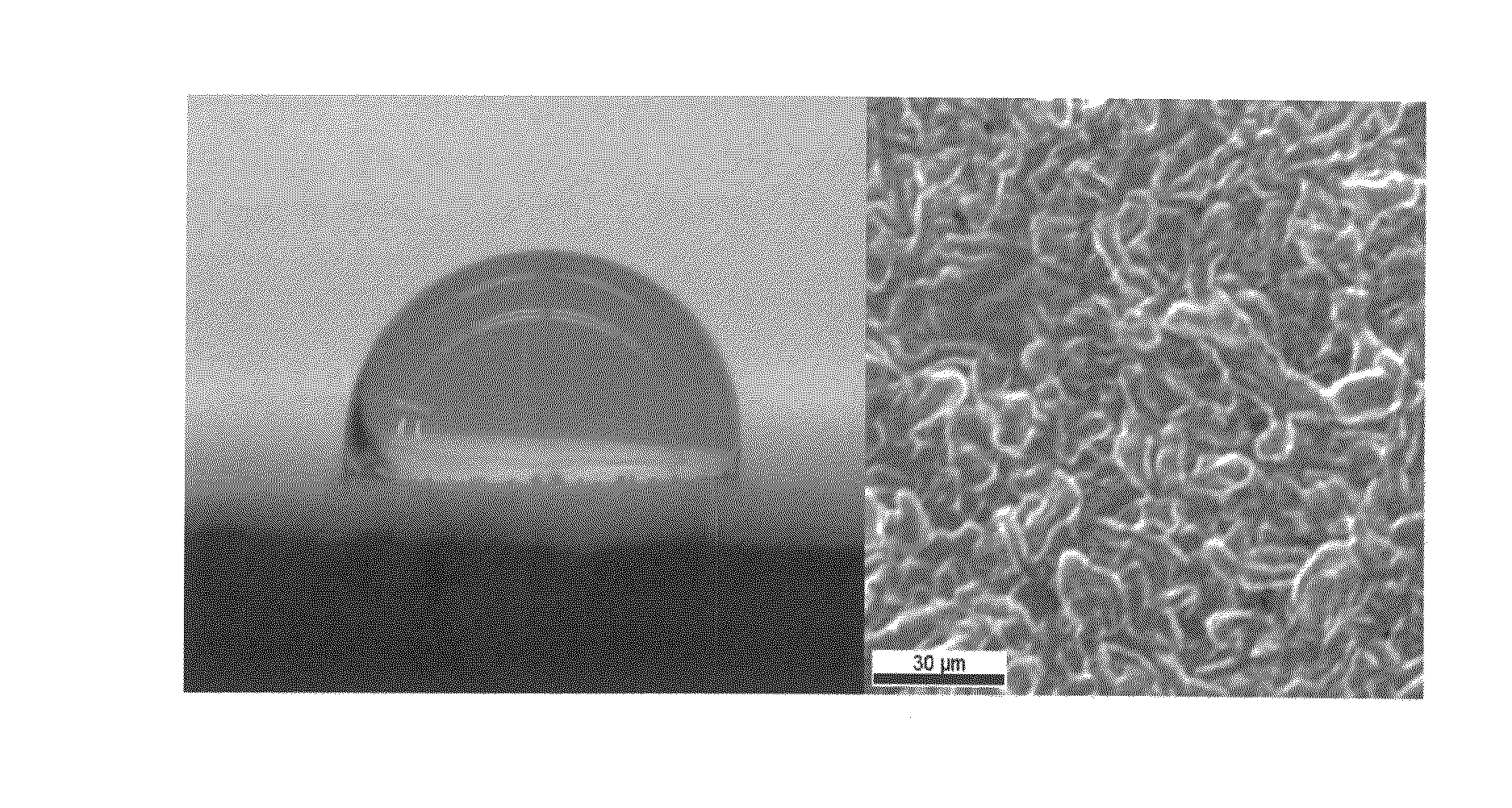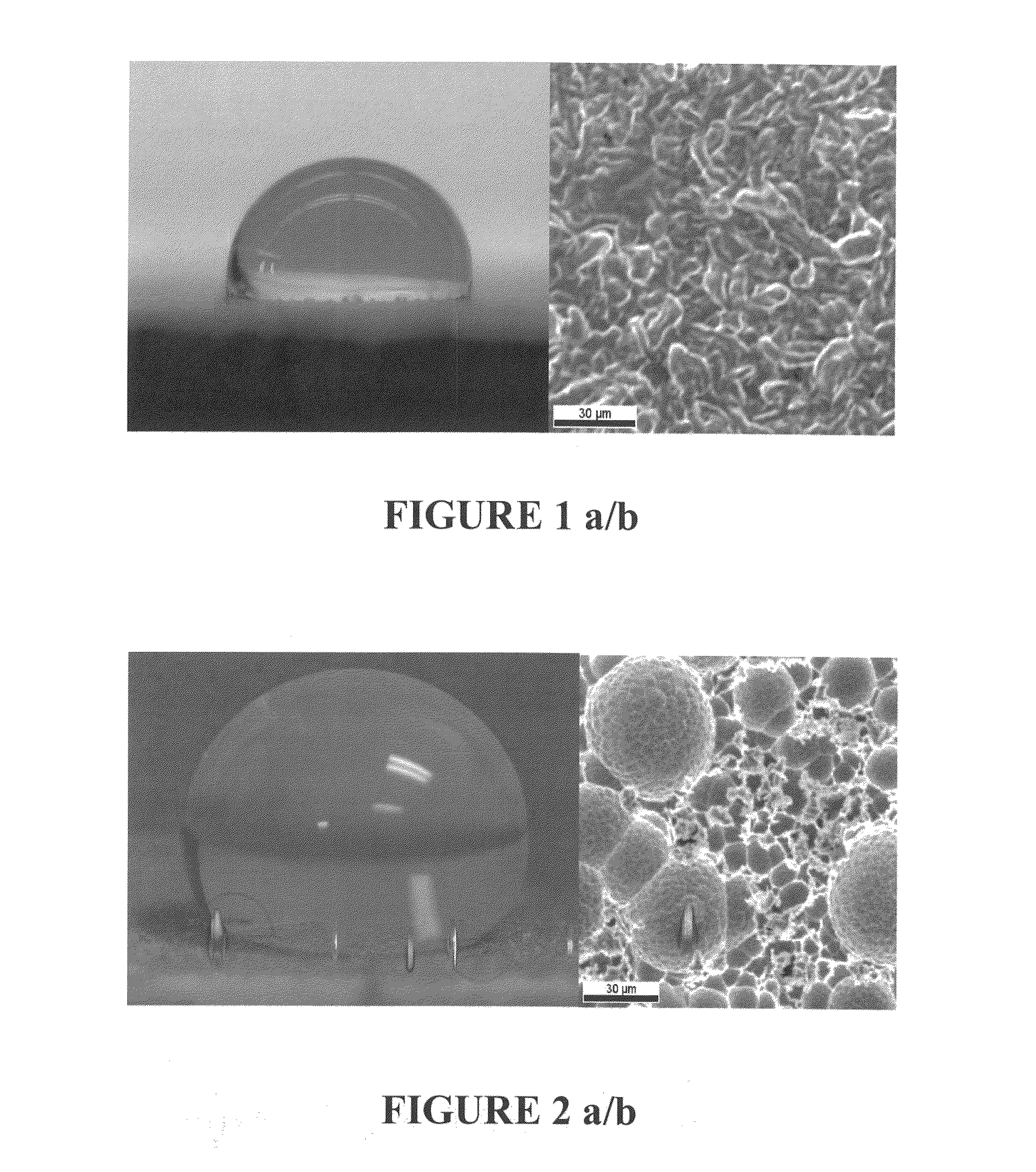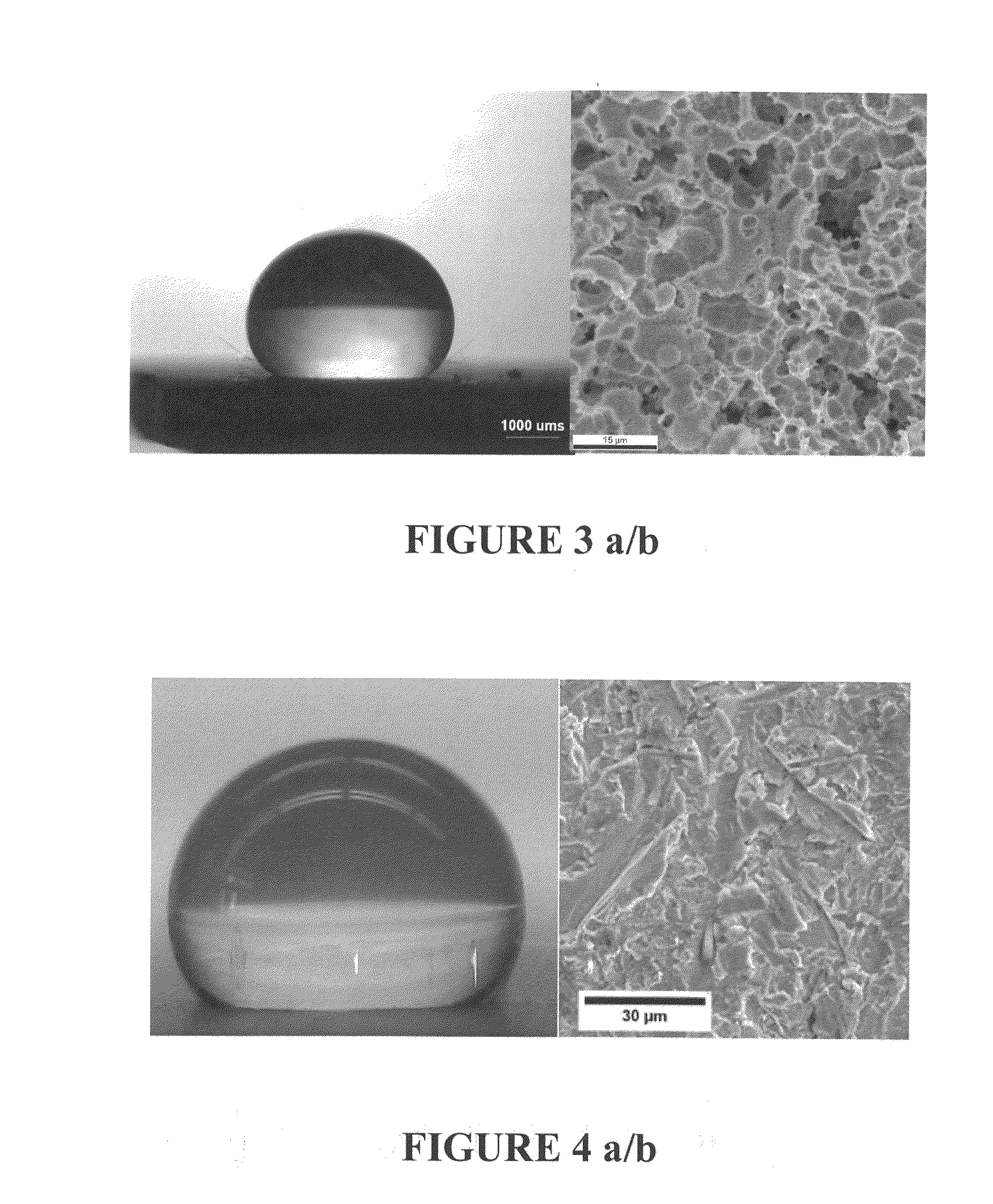Metallic articles with hydrophobic surfaces
a technology of hydrophobic surfaces and metal articles, which is applied in the direction of magnetic recording, road signs, traffic signals, etc., can solve the problems of increasing contact angle, difficult to obtain the same results when materials with coarse-grained microstructures, and inability to achieve the properties of conventional coarse-grained metallic materials. achieve the effect of low contact angle hysteresis, easy rolling off, and large scal
- Summary
- Abstract
- Description
- Claims
- Application Information
AI Technical Summary
Benefits of technology
Problems solved by technology
Method used
Image
Examples
working example i
Comparison of Contact Angle on Coarse-Grained, Fine-Grained and Amorphous Metallic Surfaces Processed According to the Invention
[0135]In this example, 10×10 cm metallic coupons were used. To achieve a reproducible and comparable surface, the surface used for contact angle measurement was initially ground flat up to 2400 grit SiC paper, rinsed in ethanol, ultrasonically cleaned in ethanol and air dried at room temperature. To eliminate any potential contamination, no polishing compounds were employed. Subsequently, the contact angle of the “uniformly flat and smooth surfaces” was measured. In all cases the contact angle was measured by placing multiple 5 μl droplets of deionized water on the flat sample surface and taking a picture with a stereoscope at 15× magnification after properly aligning the camera with the horizontal plane of the sample. Contact angle measurements were taken from the digitally captured images using the Image-pro software in triplicates on both sides of each d...
working example ii
Comparison of Contact Angle on Coarse-Grained, Fine-Grained and Amorphous Metallic Surfaces Processed According to the Invention
[0142]In this example, coupons, 10×10 cm in size and about 1 cm thick, were cut from commercially available conductive carbon-fiber reinforced plastic (CFRP) sheets (HTM 512, available from the Advanced Composites Group Ltd. of Eleanor, Derbyshire, United Kingdom), as used in blades for windmill power generators. The initial substrate preparation procedure was as follows:
[0143](i) mechanically abrading all exposed surfaces using 320 grit to a uniform finish,
[0144](ii) scrubbing with steel wool and Alconox cleaner (a surfactant available from Alconox Inc. obtainable from Olympic Trading Co. of St. Louis, Mo., USA), followed by a rinse in deionized water, and
[0145](iii) rinsing with isopropanol, followed by drying.
[0146]Thereafter the composite coupons were activated using an anodically assisted etched procedure described in U.S. Ser. No. 12 / 476,506, namely a...
working example iii
Comparison of Wear Performance and Contact Angle Retention of Imprinted Polymer Surfaces and Fine-Grained Metal Surfaces Processed According to the Invention
[0151]In this example, numerous articles are subjected to abrasive wear in many applications such as impellers and housings for water pumps, etc. In such applications, the abrasive environment is usually sand / particle slurry, moving relative to an exposed surface of a part or article. The abrasive wear of components is directly related to the surface properties, such as hardness and / or toughness. Embossed polymers, as described in the prior art, while having superhydrophobic properties, lack the durability required to provide a meaningful service life in numerous applications. To demonstrate the benefit in durability of wetproofed metal surfaces, a set of superhydrophobic ABS coupons prepared using fine-grained embossing dies as described in the copending application entitled “ARTICLES WITH SUPER-HYDROPHOBIC AND / OR SELF-CLEANING...
PUM
| Property | Measurement | Unit |
|---|---|---|
| grain size | aaaaa | aaaaa |
| grain size | aaaaa | aaaaa |
| contact angle | aaaaa | aaaaa |
Abstract
Description
Claims
Application Information
 Login to View More
Login to View More - R&D
- Intellectual Property
- Life Sciences
- Materials
- Tech Scout
- Unparalleled Data Quality
- Higher Quality Content
- 60% Fewer Hallucinations
Browse by: Latest US Patents, China's latest patents, Technical Efficacy Thesaurus, Application Domain, Technology Topic, Popular Technical Reports.
© 2025 PatSnap. All rights reserved.Legal|Privacy policy|Modern Slavery Act Transparency Statement|Sitemap|About US| Contact US: help@patsnap.com



